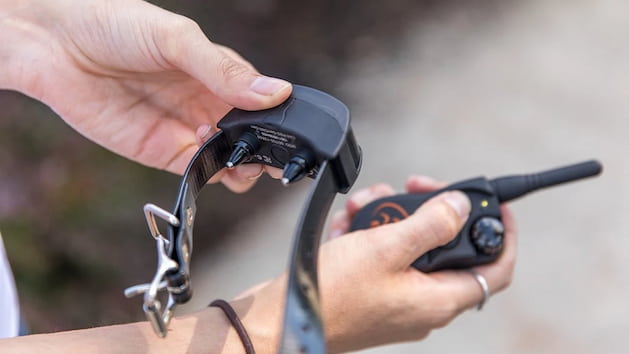Although when we expand our families by adopting a dog we like to think of it as an experience that’s all fun and games, there are times when dog ownership teaches us patience. Excessive barking is one example that requires a lot of nerves of steel, and even if you do come to get used to it after a while, chances are the rest of your family won’t, and not your neighbours.
This issue also deserves to be addressed as soon as possible because it can take a toll on your dog’s health, considering this specific behaviour raises its heart rate and causes it to waste energy quicker. Consequently, it can make both you and your dog more anxious, and that’s something I’m sure you’d do your best to avoid.

If you found it’s not related to pain or any health condition, you can resort to some tried-and-tested strategies. While the same strategies may not work for every dog, some of the recommended tips when handling this issue include:
Training with Bark Collars
Unlike training the dog yourself which can have a negative impact on the relationship you have, these handy anti-bark devices do the training for you without creating any bad feelings during the process. The way most of these collars function is by detecting the vibration of the vocal cords and correcting it through stimulation, which can be electric, tonal, or with spray.
Some of the latest models also have the option to do the training remotely thanks to remote controls with transmitters that allow you to control the excessive barking at all times, even when you’re not around Fido. This is a great solution for the dog’s self-control development, since it won’t associate the training with you but rather itself due to the increased sense of control and confidence.
Although some experts believe the use of such devices may lead to habituation, with the dog ending up learning how to continue with the bad behaviour despite the training, it’s possible to prevent this from happening by choosing to use various types of anti bark devices such as electric stimulation, ultrasonic and citronella collars, vary them to change things up with every excessive barking episode, and avoid using them all day long.
These collars, combined with treats and some affection, could work wonders for your pup. Still, to be certain the device works, it’s necessary to pay attention to the models of collars available, specifically focusing on size so your dog gets the right fit. Be sure to measure up, check the sizing charts, and also check to see if the specific model is suitable for your dog’s breed. Some electric stimulation collars, for example, aren’t that suitable for smaller breeds.

Exercise and Socialisation
If you want your pet to spend the energy properly, provide it with plenty of exercise. If you need your time in the gym, keep in mind your pooch equally requires some running, jumping and playing. Even if you can’t always go to the park or spend time outside, you could ensure it gets the needed workout every day by getting a dog treadmill.
You must fill your pet’s day with activities and things to do, so choose some engaging interactive and puzzle toys as well. Don’t overlook the power of socialisation either. Sometimes, the reason dogs bark excessively is that they haven’t spent enough time around other people or dogs.
Make your pup’s social life more inclusive by letting it meet people from all walks of life, including the mail carrier who seems like the biggest threat, and secretly hand them some treats they could give your pet once it’s behaving well. This would create a positive interaction that could help solve the annoying barking, along with the anti-barking device and affection methods.
As far as other dogs go, dog parks are excellent places where your pup could get to interact with others of its kind, but it would also help if you went on some leisurely leash walks with other dog owners now and then.
Improvement of the Surroundings
Barking is a response to stimuli which may be present around your property. For example, it could be passers-by, other dogs or even wildlife that walk nearby, and your dog feels like its territory is under attack, watching it all from a window and getting more anxious by the minute.

In this kind of scenario, the best thing to do is find a way to reduce this kind of stressful experience for your beloved pet. If possible, install a fence around your property, and add some repellents. If this doesn’t work either, it might be best to cover the windows with some blinds or curtains.
If your absence is the problem, and you’re sure you’re dealing with separation anxiety, find ways to make your pooch less reliant on you and more at ease when you’re not around. Keeping a schedule helps make the dogs seem like they have control over what happens during the day, so do what you normally do when you’re together before you go to work.
Fill up the room with interactive toys to keep them engaged, and leave some of your items around to remind them of your scent. If needed, record your voice and play it, or try talking to them through a video call. Remember all things take time, so take it slow, and reward every positive step forward with some well-deserved treats.


